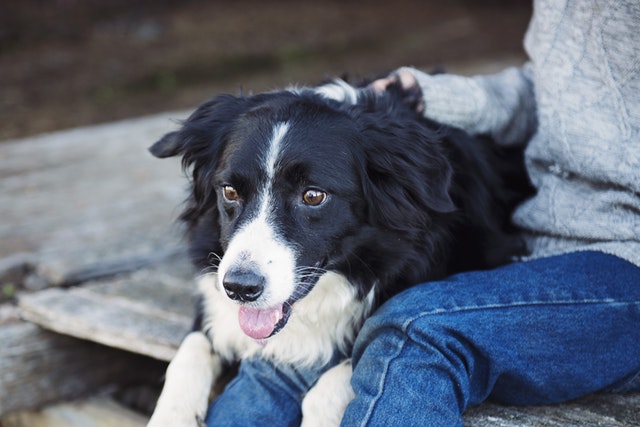When your dog is your best friend, you can’t help but smile when they follow you from room to room. They sit as close to you as possible when you’re watching TV, they lay at your feet when you’re making dinner, and they sleep in your bed at night. You’re basically attached at the hip, but when does that need to be near you take an unwanted turn? Separation anxiety is a serious problem for many dogs, but it’s not always easily identified.

Separation Anxiety vs. Being Clingy
Dogs with separation anxiety are often grouped together with their clingy cousins, but preferring to be by their people and being extremely anxious when they’re on their own are two different things. “Velcro dog” is the typical term given to dogs that follow their owners everywhere. Herding breeds that have been bred for centuries to work closely with their humans can often be Velcro dogs, and small dogs that are dependent on people also tend to be more clingy. They like their people and prefer to be by their sides at all times.
Separation anxiety, on the other hand, is more serious. These dogs don’t only prefer to be around their people, they see the situation as an extreme necessity. They panic when they’re left alone and show signs of distress. It can be caused by a traumatic experience, being separated from their mother too early, or a death in the family, but there isn’t always a specific trigger. It’s a psychological issue that can have severe consequences.

Knowing the Difference
While dogs that suffer from separation anxiety are often Velcro dogs, not all Velcro dogs have separation anxiety. Here are a few signs your furry friend is more than just clingy.
Barking and Whining
If you’re not home, you can’t tell if your dog spends several hours straight barking, howling, and whining. In the rare case that your neighbors haven’t already complained, don’t be afraid to ask them if your dog acts out while you’re not home. You could also try a test and instead of leaving, stand outside your house while your dog thinks you’re gone.
Destructive Behaviors
Dogs with separation anxiety will often resort to destructive behaviors when they’re left alone. It isn’t that they’re seeking revenge on the person that left them, it’s that they are too panicked to control their impulses. They might chew on the furniture, and they could even chew, scratch, and ram their way through a closed door.
Self Injury
Stricken with extreme panic, dogs sometimes express their anxiety through self harm. Some chew on their feet and toes until they bleed, and others end up hurting themselves in an attempt to “escape” the room and their feelings. In these cases, they don’t care about pain, their minds are too clouded with their desperate attempts.

If your dog is calm while following you around the house, produces only minimal whining when you go somewhere without them, and always wants to be where the action is while you’re home, you have a Velcro dog. A 2001 study shows clingy dogs can be at a higher risk of developing separation anxiety, but that isn’t always the case.
Whether your dog is especially needy or has a legitimate case of separation anxiety, the best thing to do if their behavior becomes a problem is to talk to a trainer. But if your dog simply likes being by your side, there’s nothing to worry about. Be flattered—it means they love you as much as you love them.
